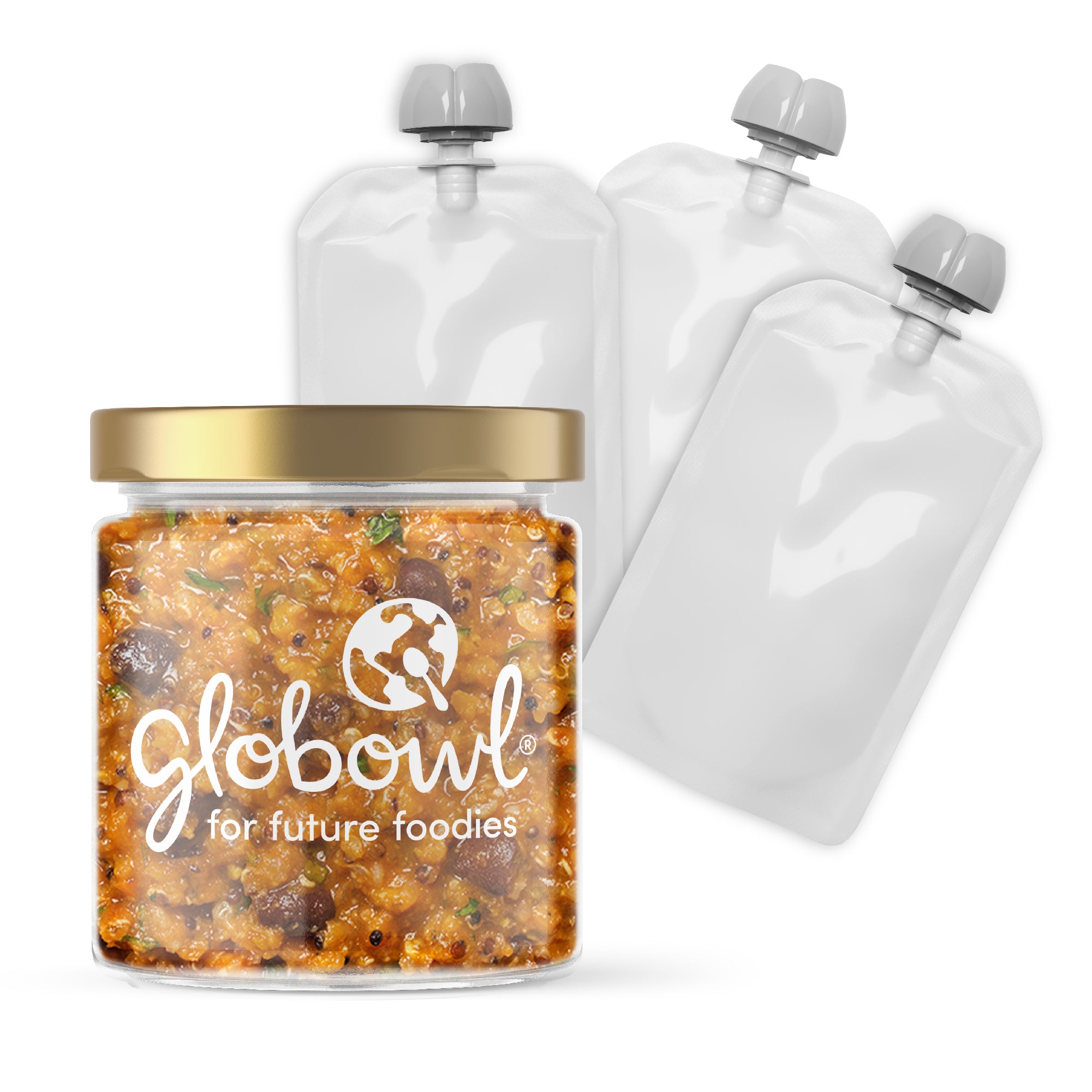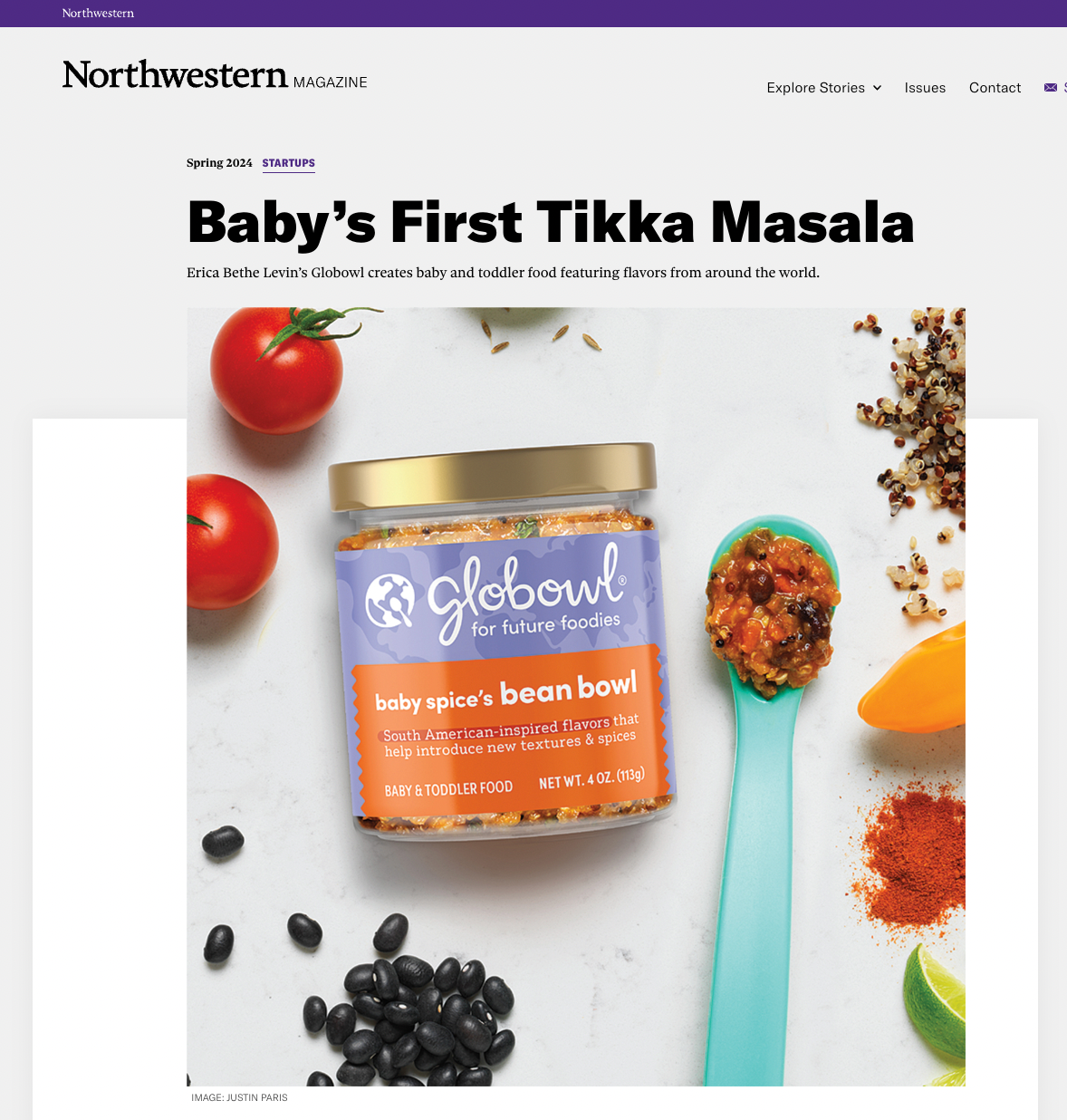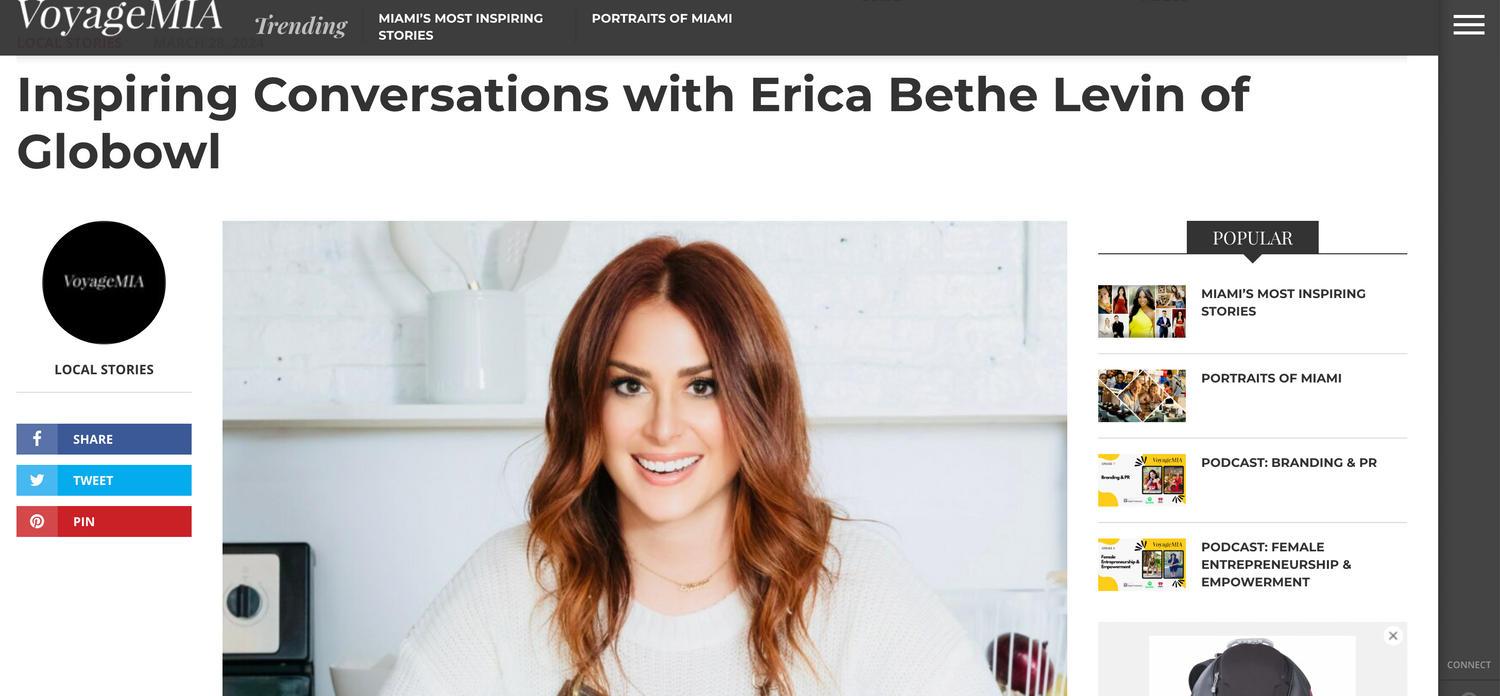Contributor: Joan O'Connor
 In this two parts blog series, we are diving into why the container for your child's food matters. Microplastics are a real problem.
In this two parts blog series, we are diving into why the container for your child's food matters. Microplastics are a real problem.
We are often asked why we chose glass rather than single-use plastic pouches or containers for Globowl’s packaging. This is a question we love to answer because our choice has everything to do with our commitment to providing the healthiest options for your baby or toddler.
There is nothing more sacred than the health of a child, which is why we extensively researched packaging options. Children’s immune systems are not fully developed so packaging choices could impact their health throughout their entire life.
Initially we favored glass because it’s a natural, non-toxic material. Glass is also nonporous which means water, air, and other liquids cannot pass through to the food, thus creating a safe housing environment. However, we wanted to make a fully informed decision, so we examined the health pros and cons of
plastic.
We quickly learned that plastic is extremely complex which led us down many rabbit holes to find and understand factual scientific information. What we discovered about plastic was disturbing:
#1: Plastic packaging can leach (leak or transfer) harmful chemicals into food content.
Baby food pouches and containers are typically made from polypropylene and/or polyethylene, two kinds of plastic the FDA has determined are non-toxic and safe for food, aka “food-grade.” But not all polypropylene or polyethylene plastic is created equal. For example, each piece of polypropylene plastic can contain dozens of different chemical additives. Additionally, each plastic manufacturer uses different combinations of chemicals to create polypropylene plastic.
Think of making plastic like baking a chocolate cake; every baker uses different types and amounts of ingredients. Some bakers may use a lot of butter making the cake less healthy than someone who uses less butter. Even with all these differences, in the end, you get a chocolate cake.
Like the best bakers who don’t disclose their secret ingredients, plastic manufacturers guard their specific formulations as trade secrets considered proprietary information which they do not publicly disclose. We think it is strange that food ingredients must appear on the package’s label but the ingredients that create the plastic touching the food content are not listed anywhere.
So why is this a health concern? Because experts say the combination of these chemicals and how they interact is poorly understood.
Health advocates believe stronger restrictions are needed because two different chemicals might be fine on their own, but when mixed, they can create a hazardous health effect. Heat, stress, or damage to packaging increases the chance of chemicals leaching into food and not knowing what those chemicals are means we don’t know if their combinations are safe for our kids.
Globowl’s verdict: Although our baby food doesn’t require heating, we want parents to have heating as a safe option. Unlike plastic, glass does not leach chemicals when heated or refrigerated.
#2: Supermarket baby aisles are filled with products labeled BPA-free on packaging, but does that guarantee the packaging is safe?
BPA (Bisphenol A) is an organic compound found in plastic and is considered an endocrine disruptor which throws off the regular functioning of hormones. Health Experts are concerned that exposure to BPA could lead to complications with reproductive and immune function, brain development, learning disabilities, metabolism, and a myriad of other health problems.
Because of these concerns, manufacturers have replaced BPA in baby ware such as sippy cups, baby bottles, and plastic baby food pouches with “substitute chemicals.”
However, some studies suggest the chemicals used to replace BPA are closely related to BPA (like Bisphenol S - BPS) and can be just as or more dangerous to a child’s health and developing brain and organs as BPA. This is known as “regrettable substitution” and some experts believe no one is responsible for making sure the replacements are safer.
The safety of polypropylene, which is BPA-free and used to make baby food pouches and bottles, has been tested. One research study suggests some polypropylene food containers can leach endocrine (hormone) disrupting chemicals when exposed to stressors like heat or food with high acidity, or over a long duration of time.
To be fair, baby food pouches were not one of the plastics used in these studies and the FDA rigorously evaluates the safety of these baby food-grade plastic materials. However, these studies raised red flags with us as well as experts who believe more research is needed.
Globowl’s Verdict: Because plastic is chemically complex and plastic products (and their effects) vary between manufacturers, we just don’t know enough about plastic to confidently consider them safe for your baby’s health.
Please check out Part 2 for more reasons to use glass vs. plastic for your little ones' food and consumption needs.





